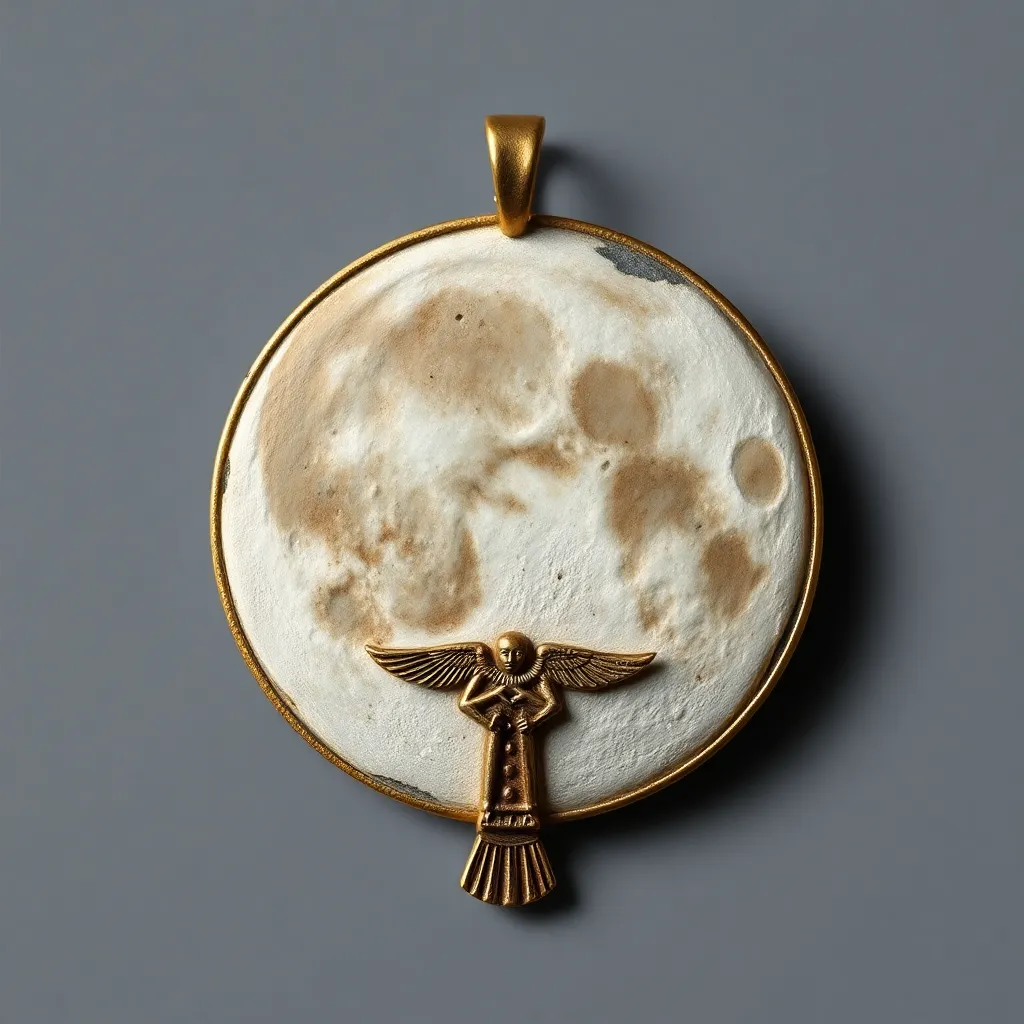Amulets of the Moon: Lunar Symbols in Egyptian Beliefs
I. Introduction
In ancient Egyptian culture, amulets served as powerful symbols of protection, health, and divine favor. These small objects were worn or carried by individuals to invoke the powers of the gods and safeguard them from harm. Among the various symbols used in amulets, lunar symbols held a special significance due to the moon’s prominent role in Egyptian mythology and cosmology.
The moon was not only a celestial body but also a vital element in the Egyptians’ understanding of time, life cycles, and the afterlife. This article explores the rich tapestry of lunar symbols in ancient Egyptian beliefs, focusing on the various types of lunar amulets, their meanings, and their cultural significance.
II. The Moon in Ancient Egyptian Cosmology
In ancient Egyptian cosmology, the moon was mythologically represented in various ways, often associated with deities that governed its phases and movements. The primary lunar deities included:
- Khonsu: The god of the moon, known for his role in timekeeping and his ability to traverse the night sky.
- Thoth: The god of wisdom, writing, and magic, who was often depicted with a lunar symbol and associated with the moon’s cycles.
The connection between the moon and timekeeping was profound in Egyptian society. The lunar calendar was essential for agricultural practices and religious festivals, as it dictated the timing of rituals and seasonal events.
III. Types of Lunar Amulets
Lunar amulets came in various forms, each designed to embody the protective and benevolent qualities associated with the moon. Common types of lunar amulets included:
- Pendants: Often worn around the neck, these amulets featured intricate designs symbolizing the moon and its deities.
- Rings: Worn on fingers, these rings were sometimes engraved with lunar symbols to provide ongoing protection.
- Scarabs: Although primarily associated with the sun, some scarabs incorporated lunar motifs, symbolizing rebirth and transformation.
The materials used in crafting lunar amulets were chosen for their significance and beauty. Common materials included:
- Silver: Associated with the moon, silver was often used in amulets for its reflective qualities.
- Lapis lazuli: This deep blue stone symbolized the night sky and was frequently used in amulets to invoke lunar energies.
The iconography associated with lunar symbols often included crescent shapes, full moons, and depictions of the lunar deities themselves, each carrying its own set of meanings and protective qualities.
IV. Symbolism and Meanings
Lunar amulets were imbued with rich symbolism and meanings, reflecting the multifaceted nature of the moon in Egyptian beliefs. These amulets were believed to provide:
- Protection and Guidance: Lunar amulets were thought to protect individuals from evil spirits and misfortune, guiding them safely through life’s challenges.
- Fertility and Rebirth: The moon’s cycles mirrored the natural rhythms of life, making it a potent symbol of fertility, growth, and renewal.
- Connections to the Afterlife: The moon was linked to the journey of the soul, providing illumination and guidance in the afterlife.
V. Rituals and Usage of Lunar Amulets
Lunar amulets were used in various contexts throughout ancient Egypt. They played crucial roles in rituals and personal practices, such as:
- Protective Rituals: Amulets were often employed in rituals to ward off illness or misfortune, especially during significant life events such as childbirth.
- Funerary Practices: Lunar amulets were placed with the deceased to ensure safe passage through the afterlife, reflecting the belief in the moon’s guiding light.
- Personal Significance: Individuals and families often possessed specific lunar amulets that held personal meaning, serving as talismans of hope and protection.
VI. Lunar Amulets in Art and Literature
The representation of lunar symbols transcended mere amulets, finding expression in various forms of art and literature. In Egyptian art, lunar symbols were depicted through:
- Reliefs and Paintings: Artistic works often showcased lunar deities and symbols, highlighting their importance in religious and cultural narratives.
- Jewelry and Decorative Arts: The intricate designs of jewelry often featured lunar motifs, symbolizing the connection between the divine and the earthly.
References to lunar amulets can also be found in ancient texts, including religious writings and magical spells, illustrating their significance in daily life and spirituality. Furthermore, the influence of lunar symbolism continued to resonate in later cultures, shaping beliefs and practices beyond ancient Egypt.
VII. Archaeological Discoveries
Numerous archaeological discoveries have shed light on the significance of lunar amulets in ancient Egyptian society. Notable findings include:
- Amulets from Tombs: Excavations of tombs in the Valley of the Kings have revealed a wealth of lunar amulets, providing insights into their role in funerary practices.
- Marketplaces and Temples: Discoveries in various marketplaces and temples have showcased the popularity of lunar amulets among the general populace.
Insights gained from these archaeological studies have deepened our understanding of how lunar amulets functioned within the broader context of ancient Egyptian beliefs, showcasing their integral role in the spiritual and material culture of the time.
VIII. Conclusion
The significance of lunar amulets in ancient Egypt is a testament to the intricate relationship between celestial bodies and human beliefs. These amulets served not only as protective talismans but also as symbols of fertility, renewal, and the journey of the soul. The enduring legacy of lunar symbols continues to captivate modern scholars and enthusiasts alike, reflecting the profound intersection of belief and material culture in ancient Egypt.
In summary, lunar amulets encapsulate a rich narrative that intertwines mythology, daily life, and spiritual practice, offering us a glimpse into the complexities of ancient Egyptian civilization.




